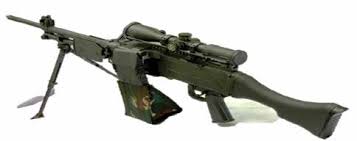Exactly four years after the Galwan Valley clash, India has taken a significant leap in drone warfare with the induction of the Nagastra 1, the country’s first indigenously manufactured suicide drone, into the Indian Army.
These loitering munitions, produced by Economics Explosive Limited, a subsidiary of Solar Industries based in Nagpur, represent a milestone in India’s defense capabilities, especially along the Line of Actual Control (LAC) adjacent to China in eastern Ladakh.
Introduction of Nagastra 1
The Indian Army has received its first batch of 120 Nagastra 1 drones, part of an order of 480 units.
This deployment underscores India’s commitment to self-reliance in defense technology.
Designed to execute precise air strikes, these drones are capable of destroying enemy tanks, armored vehicles, military trucks, bunkers, posts, and weapon depots swiftly and efficiently.
Strategic Capabilities and Testing
Nagastra 1 enhances the Indian Army’s operational strength with its portability and versatility.
Tested in the Nubra Valley of Ladakh near the China border, this 9 kg drone boasts a flight duration of 30 minutes and a range of 15 km in man-in-loop mode, extending to 30 km in autonomous mode.
Its stealth capabilities, aided by low sound emissions, ensure it remains undetected by enemy radars, allowing it to infiltrate and strike targets discreetly.
In addition to traditional battlefields, cyberspace has emerged as a critical and challenging arena in modern warfare.
The drone’s fixed-wing design accommodates various payloads for targeted attacks, making it adaptable for diverse combat scenarios.
Its variants can be launched from a tripod or by hand, and can be utilized for tank, armored, and anti-personnel missions.
Historical Context and Motivation
The deployment of Nagastra 1 comes four years after the deadly clash between Indian and Chinese forces in the Galwan Valley on June 15-16, 2020, which resulted in the martyrdom of 20 Indian soldiers, including Colonel Santosh Babu.
While China has disclosed limited information about its casualties, the incident highlighted the urgent need for advanced surveillance and combat technologies.
This encounter significantly influenced India’s strategic shift towards mastering drone technology, culminating in the development and deployment of Nagastra 1.
Unique Features and Economic Efficiency
Nagastra 1 stands out not only for its operational capabilities but also for its cost-effectiveness.
Demonstrated at the Manekshaw Center in April 2023, the drone is approximately 40% cheaper than comparable aerial weapons imported from Israel and Poland.
Equipped with day and night surveillance cameras and a 1 kg explosive warhead, Nagastra 1 also features a soft-landing capability.
In case of mission abortion or failure to identify a target, the drone can be recalled and safely landed using a parachute for potential reuse.
The Growing Importance of Drone Warfare
The importance of drones in modern warfare is evident from their extensive use in conflicts such as the Russia-Ukraine war and the Israel-Hamas clashes.
Recognizing this trend, the Indian Army is bolstering its capabilities with indigenous drones.
This move aligns with the Modi government’s decade-long push for self-reliance, encouraging Indian companies to produce homegrown weapons, drones, and missiles.
Recent global events underscore the strategic advantage of drones.
For instance, a viral video showcased a Ukrainian suicide drone targeting a Russian military jeep, captured by another drone’s camera.
Such incidents highlight the effectiveness of drones in modern combat, reinforcing India’s decision to integrate Nagastra 1 into its military arsenal.
In conclusion, the introduction of Nagastra 1 marks a pivotal development in India’s defense strategy, enhancing its ability to conduct precise and covert operations.
As the geopolitical landscape evolves, the Indian Army’s investment in indigenous drone technology signifies a robust step towards fortified national security and technological self-sufficiency.
Written by Huma Siddiqui




